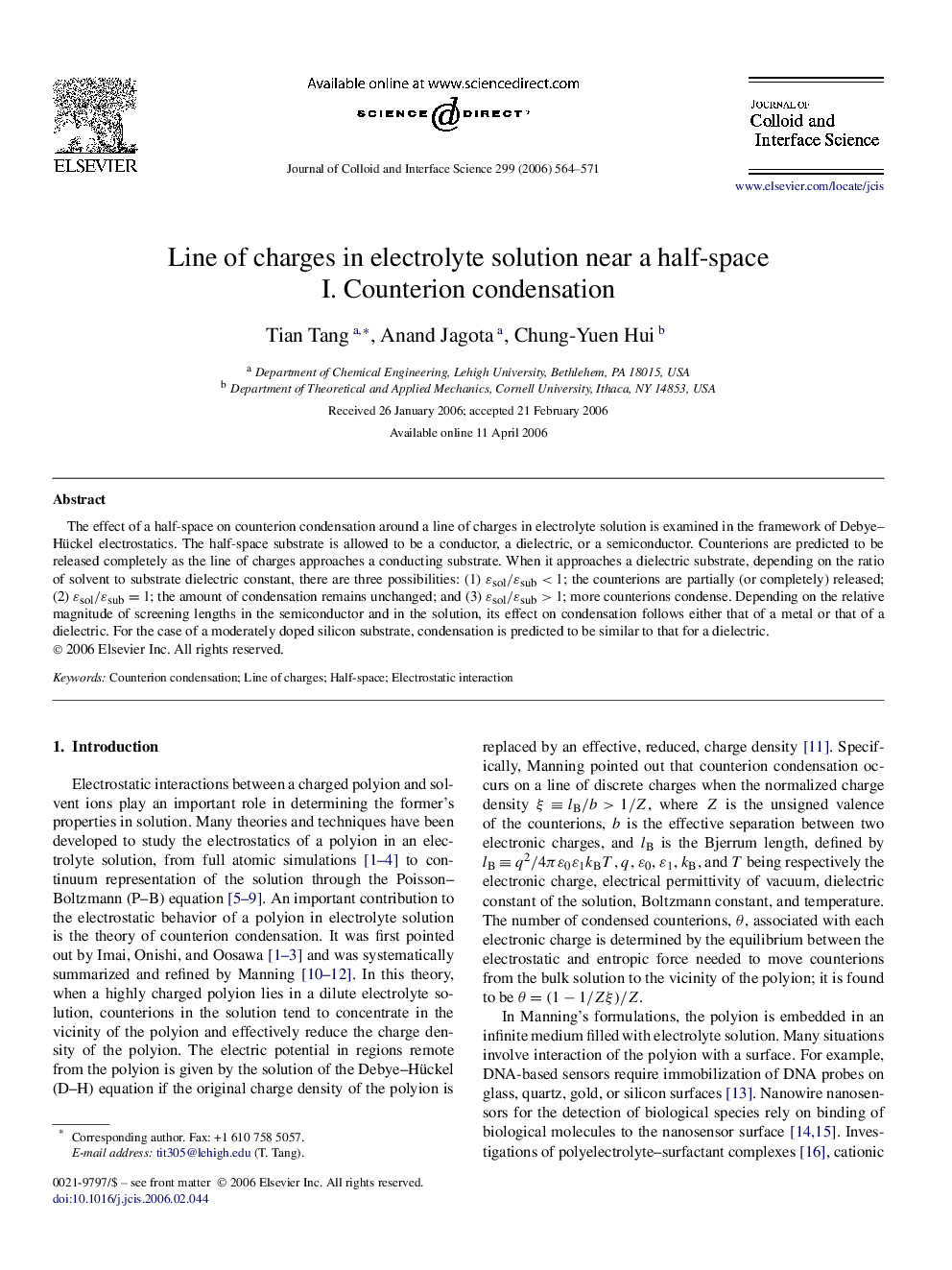| Article ID | Journal | Published Year | Pages | File Type |
|---|---|---|---|---|
| 613384 | Journal of Colloid and Interface Science | 2006 | 8 Pages |
The effect of a half-space on counterion condensation around a line of charges in electrolyte solution is examined in the framework of Debye–Hückel electrostatics. The half-space substrate is allowed to be a conductor, a dielectric, or a semiconductor. Counterions are predicted to be released completely as the line of charges approaches a conducting substrate. When it approaches a dielectric substrate, depending on the ratio of solvent to substrate dielectric constant, there are three possibilities: (1) εsol/εsub<1εsol/εsub<1; the counterions are partially (or completely) released; (2) εsol/εsub=1εsol/εsub=1; the amount of condensation remains unchanged; and (3) εsol/εsub>1εsol/εsub>1; more counterions condense. Depending on the relative magnitude of screening lengths in the semiconductor and in the solution, its effect on condensation follows either that of a metal or that of a dielectric. For the case of a moderately doped silicon substrate, condensation is predicted to be similar to that for a dielectric.
Graphical abstractFigure optionsDownload full-size imageDownload as PowerPoint slide
